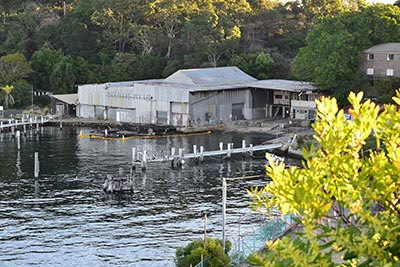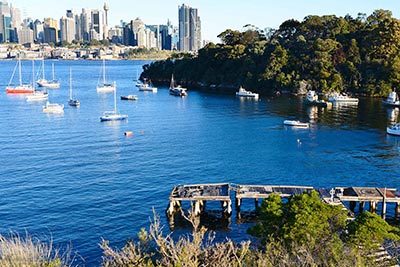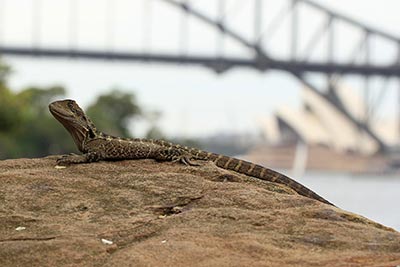Balls Head Reserve is a prominent headland at the tip of the Waverton Peninsula. This reserve is one of the most highly utilised bushland areas in North Sydney, with wonderful views of the harbour and city.
Bush regeneration began on Balls Head in 1980 and the Bushcare group has been working weekly on the site since 1990. They have been involved in many projects including rehabilitating bushland around an Aboriginal engraving, weeding, planting and erosion control.
Balls Head Reserve is a forested headland situated on Port Jackson, 1.5 kilometres (one mile) west of the Sydney Harbour Bridge. It is named after Lieutenant Henry Lidgbird Ball, a Royal Naval officer who commanded the Supply on the First Fleet. The original inhabitants were the Cammeraygal people. Evidence of their occupation includes art sites, middens and a spectacular petroglyph of a marine creature. An Aboriginal burial site within a rock shelter was documented by Sandra Bowdler, an archaeologist from the Australian Museum in 1964.
Balls Head was celebrated in two poems by Henry Lawson. The second of these, ‘The Sacrifice of Balls Head’ protested against plans to build a coal bunkering depot there in 1916. It stands as an early articulation of conservationist sentiment. A Coal Loader was built by 1920.
The area was proclaimed as a public reserve by Premier Jack Lang in 1926. By then much of the forest that Lawson had described was gone. A Beautification Committee was established by 1931 led by conservationist Walter Froggatt. Native trees were reintroduced to the headland throughout the decade. Many of these were sourced from the Royal Botanic Gardens, Sydney. A stone tablet acknowledging Froggatt’s work was unveiled in 1938. It can still be seen near the car park at the southern end of the reserve.
The reserve is now maintained by North Sydney Council and contains a well-preserved natural bushland area, one of the closest to the city of Sydney. Plants include the Sydney red gum, Port Jackson cypress, blueberry ash and Port Jackson fig. Many birds are found here, as are reptiles, flying foxes, microbats and marsupial mammals.
It is a popular picnic and bushwalking site, with views of the city skyline and harbour.



